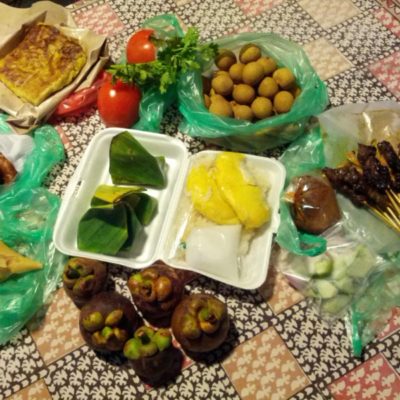
The Pros and Cons of Being in Opposite Time Zones
May 7, 2014 | Nomad Life, Travel Logistics, Work & Business
We’ve spent the last nine months in SE Asia (Malaysia, Singapore, Indonesia, Thailand) and India. It’s Roberto’s first time in Asia, and for both of us, it’s the first time running our businesses while in Asia.
As our time here winds down (in mid-May we’ll be heading back to the States and then on to Argentina), I’ve been looking back on the experience. One of the biggest changes for us has been the difference in time zones; in Asia, we’re about 12 hours ahead of most of our friends, family, and clients, and we’ve found it has its pros and cons.
We both have ended up working with a few clients in Asia while we’ve been here, so that’s certainly been easy enough to manage, but the majority of our clients are in North America (and a few in Europe), so the time difference has definitely been a factor.
For work we do on our own time, like Roberto’s tech VA and graphic design work, and my editing work, being in opposite time zones from most of our clients has been a good thing a lot of the time, because we’re able to get work done while they’re asleep/offline and have it waiting for them the next day.
In some ways, I think the time difference also makes me more productive, because during the day in Asia, there’s very little email coming in, and less action on social media, so I’m able to focus on my work with fewer distractions. (And, if we choose to take a day to sightsee or relax, we don’t miss very much.)
But for any work that has to happen in real time or close to it—whether we’re waiting for feedback before we can move forward, or need to have a live call with someone—it’s been much more of a challenge.
Pretty much the only way to be available for those live interactions is to extend our working hours and make ourselves available in the early morning or late evening in Asia. We’re both night owls, so we tend to choose late-night options over early mornings; we often find ourselves up working late and having calls with clients at midnight or even later.
This works fine for us, but I’ve realized that it requires letting go of those “shoulds” about when you are and aren’t “supposed” to be working. Sometimes it can feel like we’re working all the time, and I have to remind myself of how much time we’ve taken off in the middle of the day, or late afternoon and early evening, before returning to work at night.
I think it’s important that I, as the person traveling, stay on top of time zones, so my clients (and family and friends!) don’t have to. I always offer suggestions of possible times to talk in their time zone, so they don’t have to bother to calculate the time difference. And of course I always turn off notifications and ringers so if someone happens to call me in the middle of the night, it’s no big deal! (There are a lot of tools that can help with all this; check out this post about handling time zones and scheduling for more info.)
It’s important to anticipate the challenges and have a plan for how you’re going to continue to run your business even when you’re halfway across the world from your clients and customers. Especially if you have a full roster of coaching clients, or otherwise need to have a lot of live interaction with your audience, take a good look at your calendar (and a handy tool like World Time Buddy) to see how you can make it work—before you take the leap.
Get the Top 10 Logistical Things You Need to do before becoming a nomad
(That Aren't What You Think)
When you download the guide, you’ll also be subscribed to the Nomadtopia newsletter. Your email is safe with me and you can unsubscribe anytime. View our Privacy Policy.




